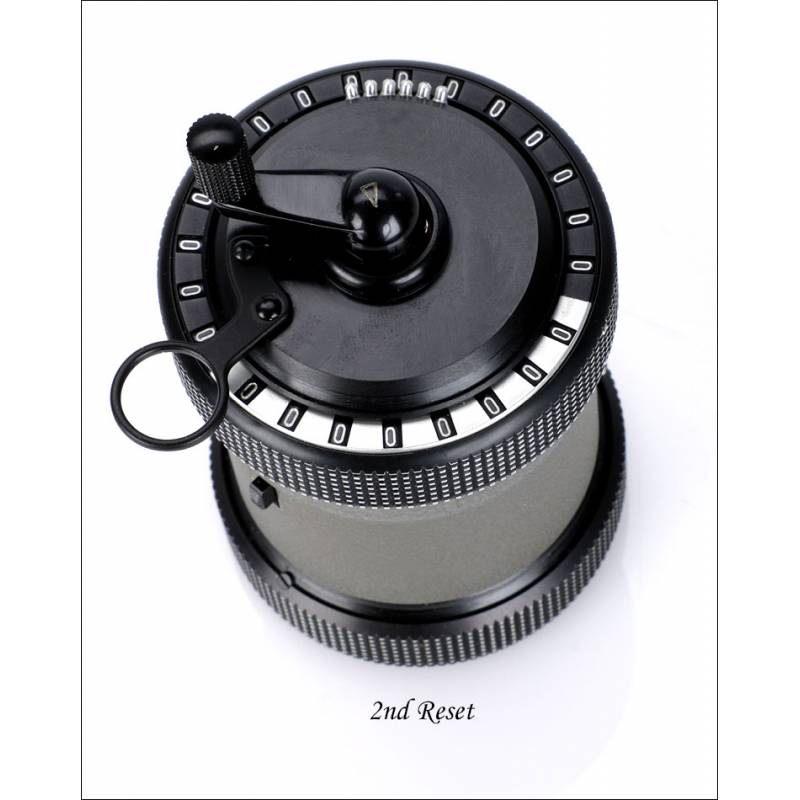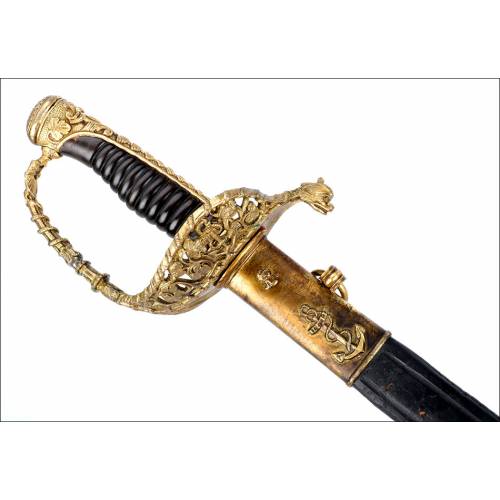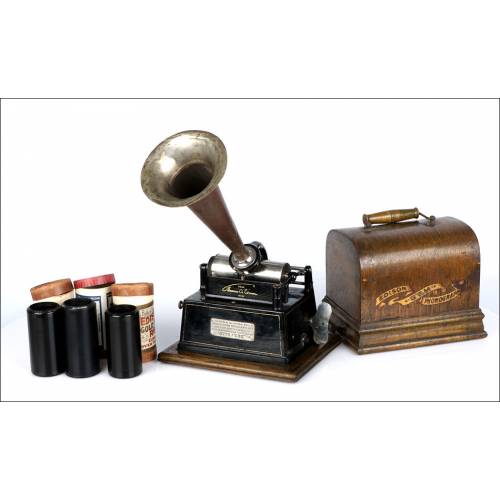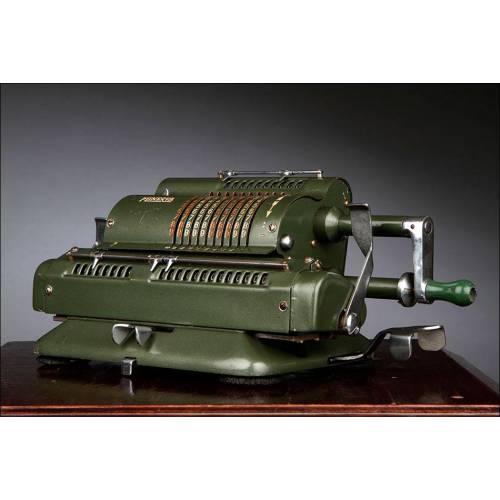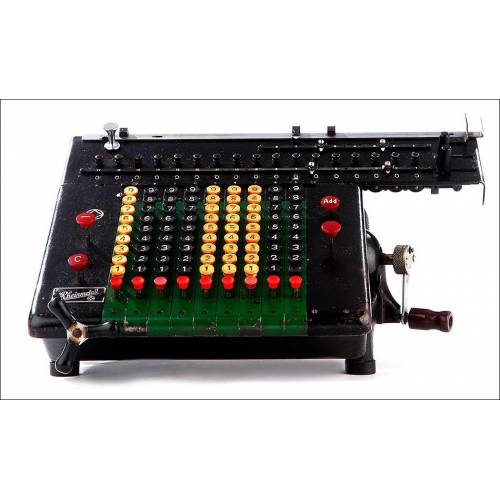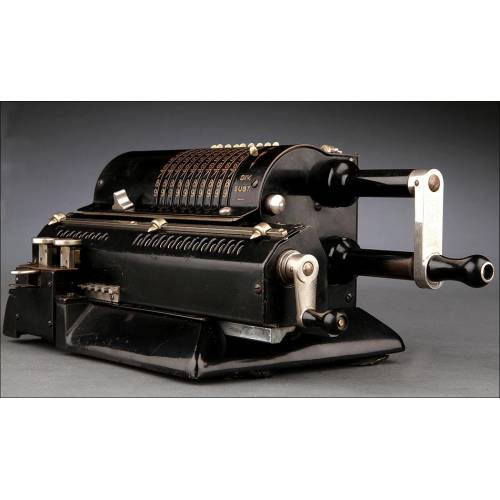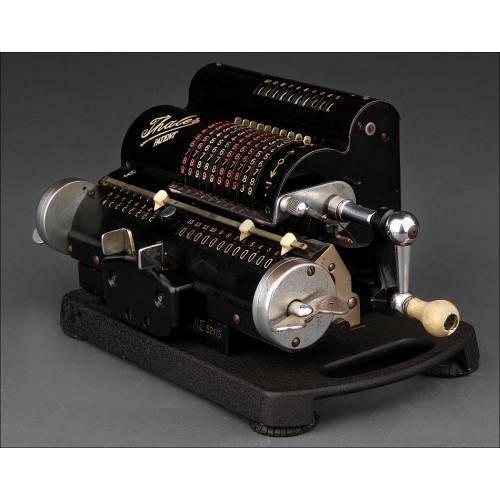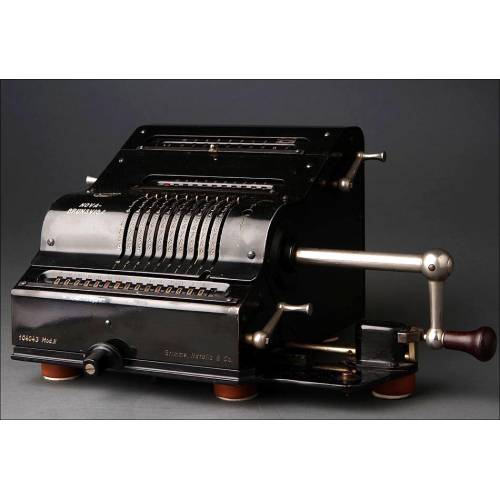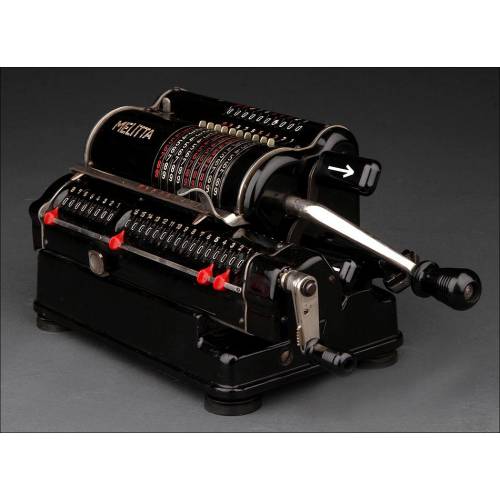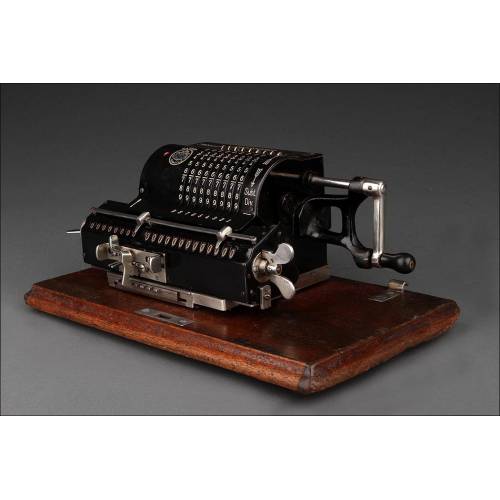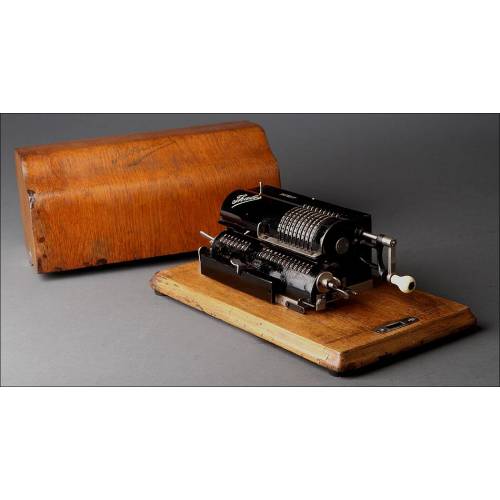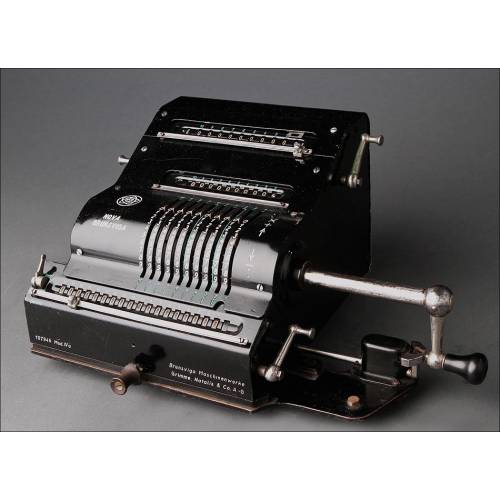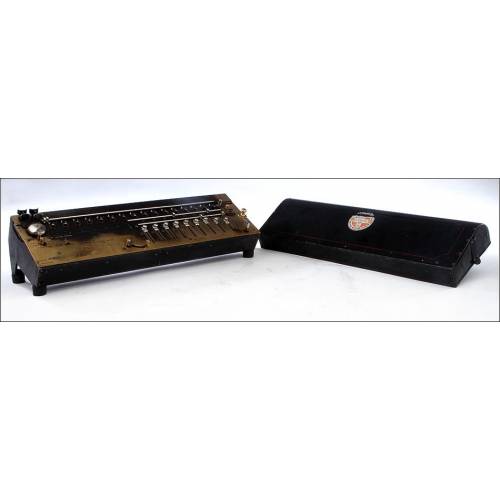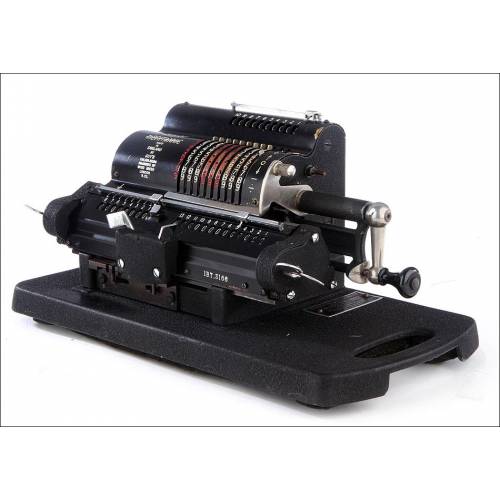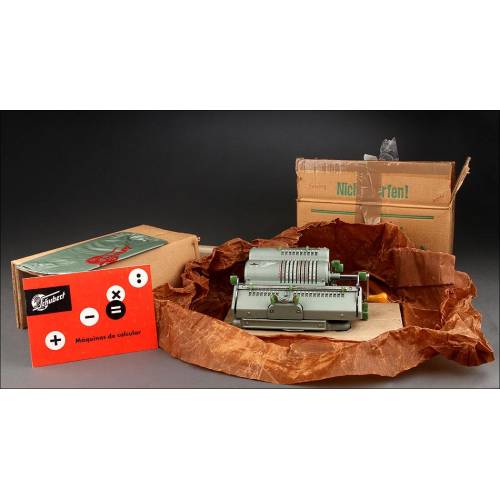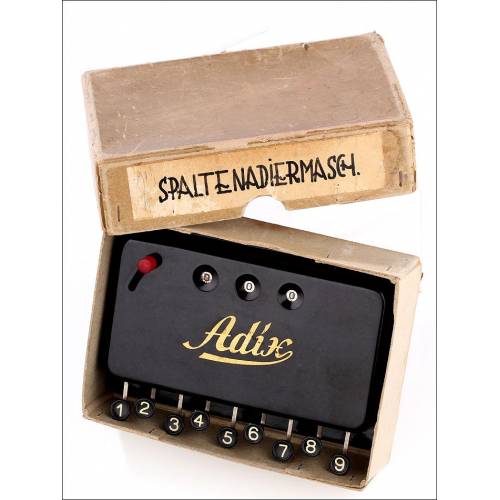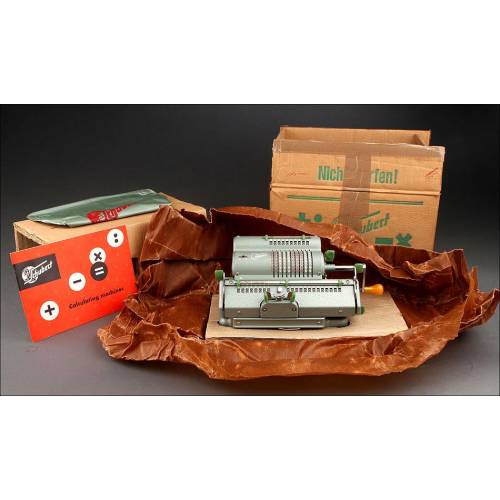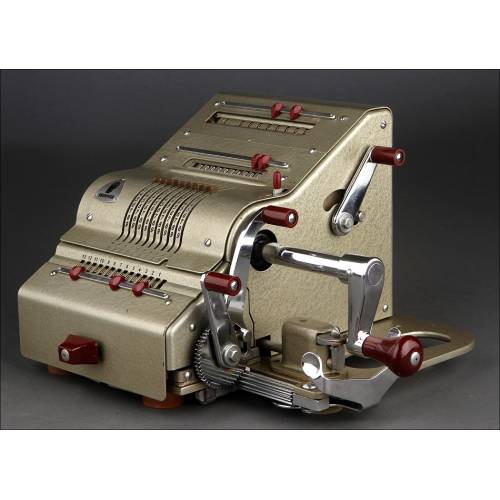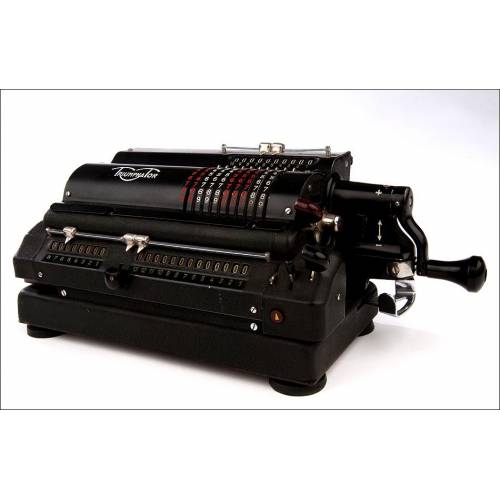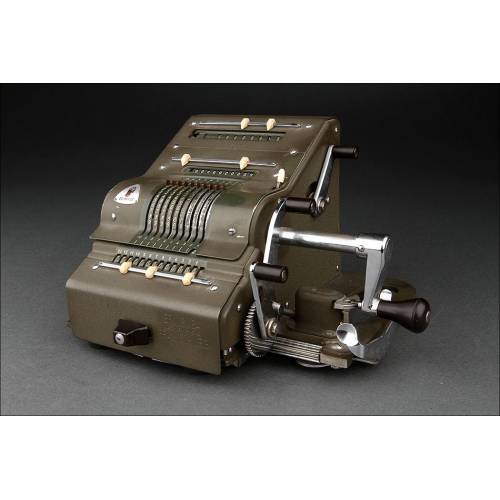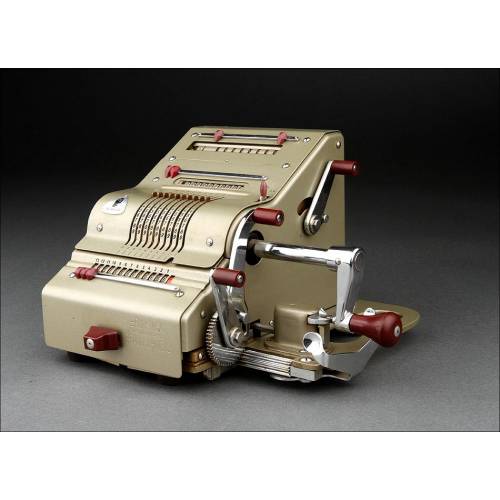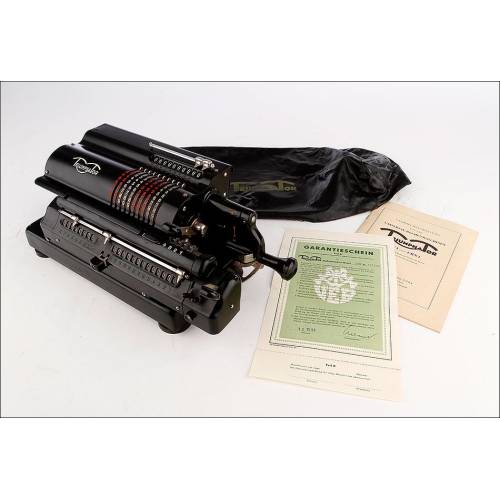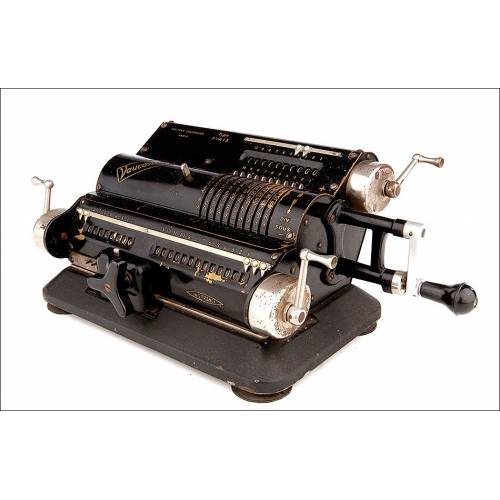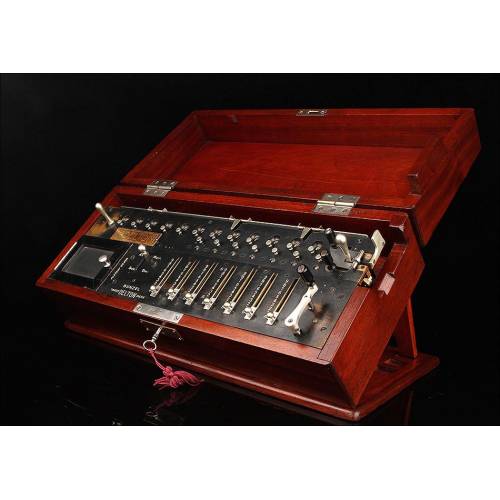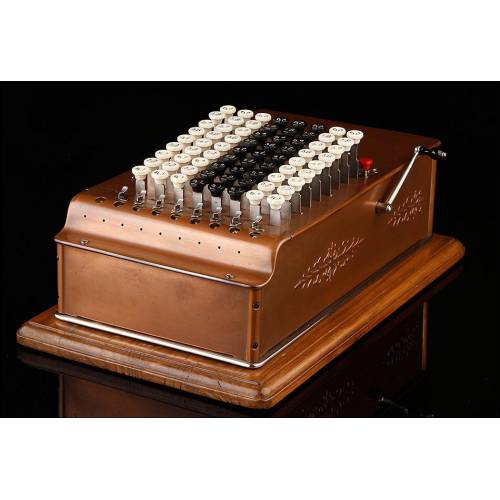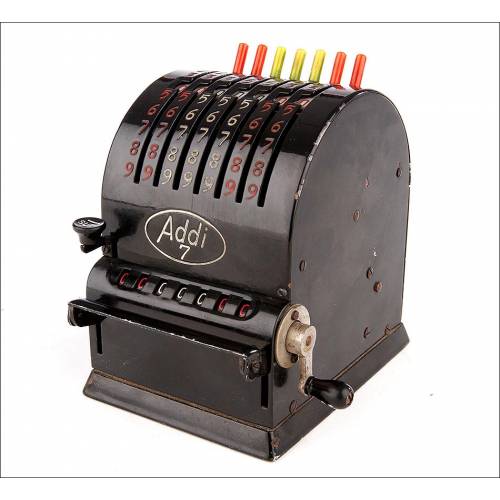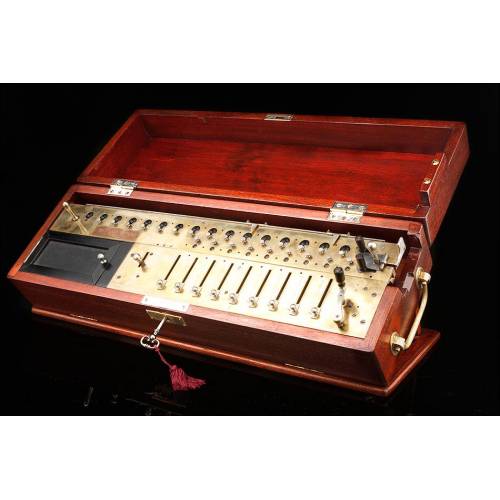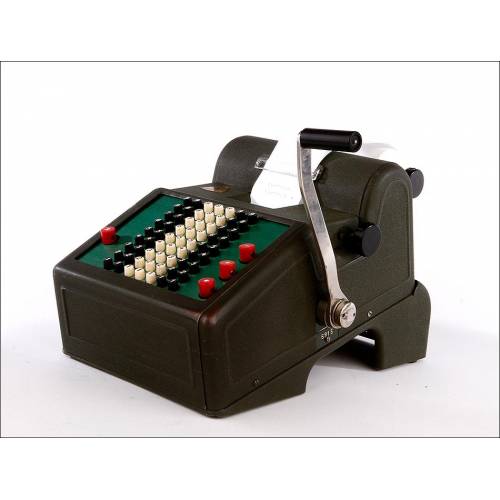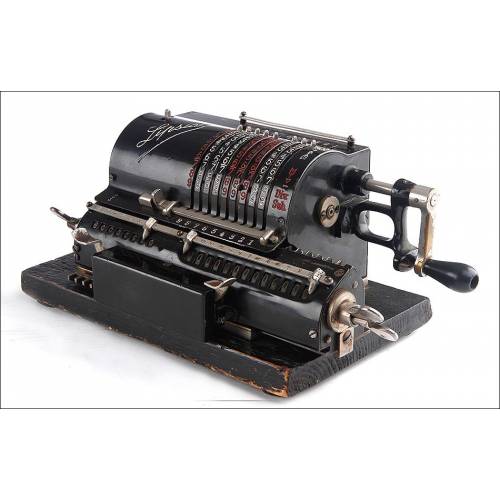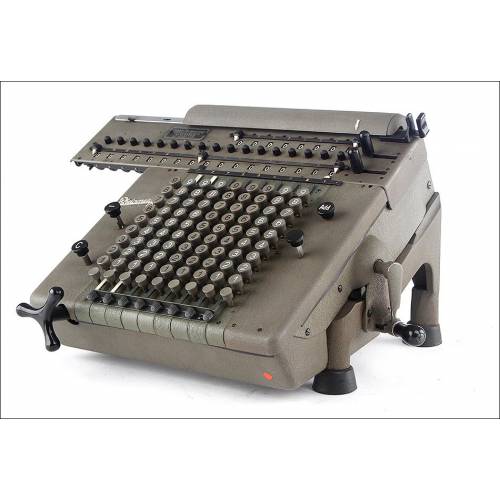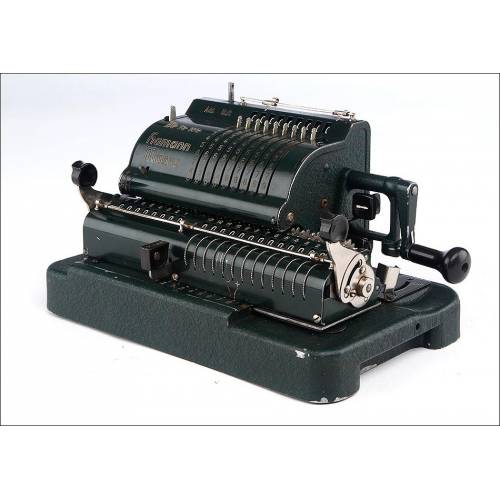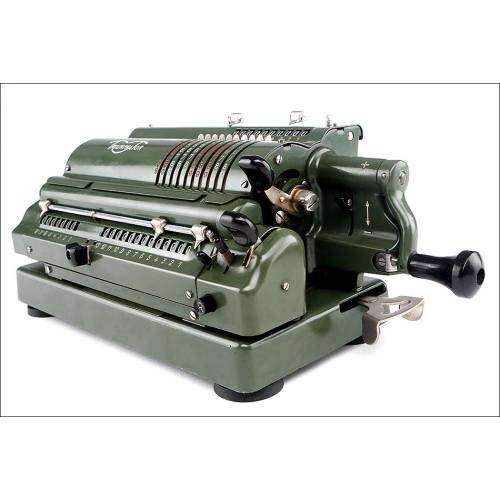C-407
Curta II Antique Calculator. Germany, January 1960
Antique Curta II manual calculator. Iconic piece in perfect working condition. With serial number and original case in excellent condition.
Sold!
Original antique Curta II calculator in almost mint condition, perfect working order and in its original protecting case. The calculator was made in Germany in January 1960; we know the manufacturing date through the serial number printed at the machines base. In order to perform operations, the user must select the numerals by pushing the vertical levers. To obtain the result, he or she will have to turn the top crank; it will appear at the top boxes. The calculator is made of black-enameled metal and plastic. The vertical cylindrical surface is covered by a matt grey hammered paint. The levers are made of black and red plastic. The CURTA name is printed in white lettering on the grey enamel; we can also see it over the black finish of the metal case. At the calculators base there is a white inscription with the serial number Nº 513754, the place where the machine was made (Made in Liechtenstein), the manufacturing company (Cortina Ltd. Mauren) and the name of the inventor (System Curtz Herztark). This great antique Curta II calculator, almost mint, is the ideal piece to complete a fine collection of ancient calculating machines and arithmometers.Curta Calculators History Curta calculators are mechanical machines with a simple and intellgent design, fully reliable. Until the arrival of electronic calculators in the 1970s, Curta machines were the most popular of all. Their design resulted from the talent of Curtz Herztark, an Austrian inventor with Jewish ancestry who found inspiration in Leibnizs arithmometer and Charles Thomass calculating machine.They are compact and cylindrical in shape, light and easy to carry: the can be hidden in the palm of the hand. Curtz Herztark developed the first Curta calculator in Vienna in 1903, but he did not patent his invention until 1938. That year, the Nazis forced him and his company to produce war material for their army. In 1943 Herztark was taken to Buchenwald concentration camp where he was encouraged to keep on with this calculator in order to give it to Hitler as a present to celebrate the Nazi victory in World War II. Nevertheless, in 1945 the American forces liberated the prisoners of Buchenwald and soon after Herztark founded his own calculator factory. Some years later, fearing that the Soviet government sent him to Russia, he moved to Austria. Curta kept on producing calculators for decades; Curtz Herztark always profited from the sales of his products until the 1970s, when electronic machines replaced mechanical calculators.

